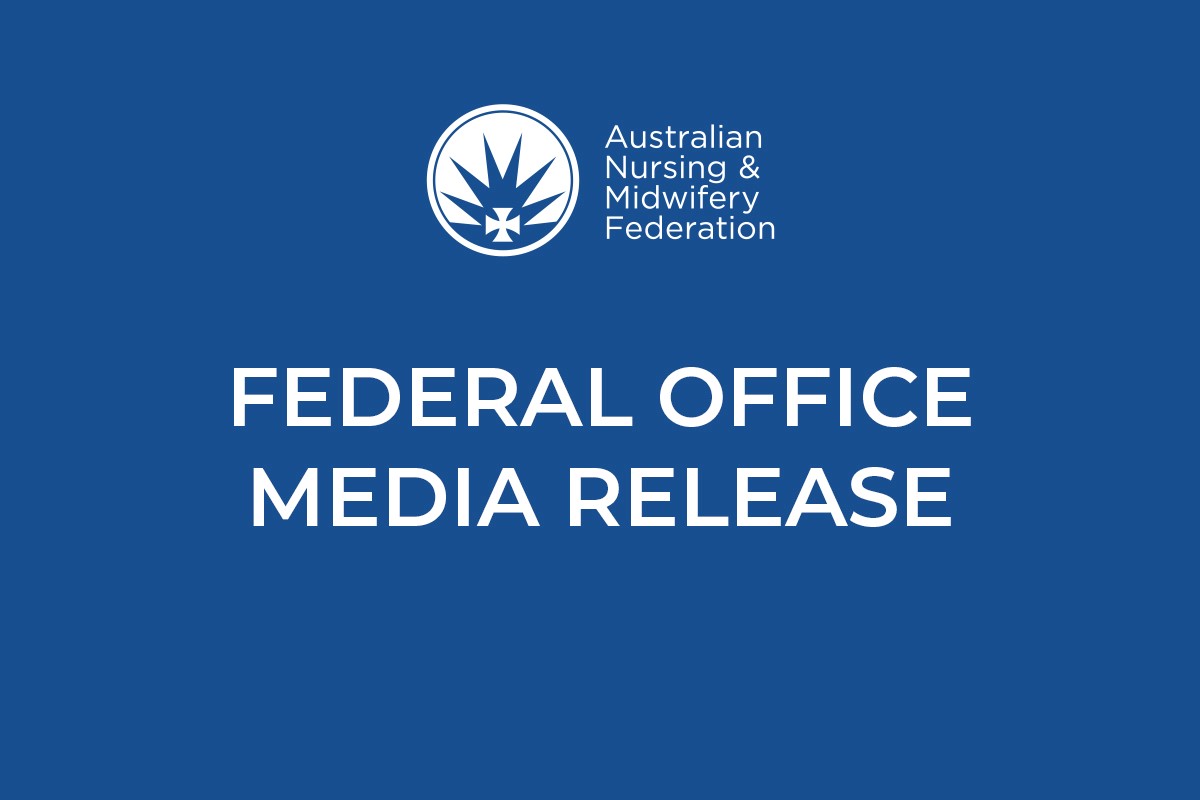
These case examples are designed for both aged care providers and employees. The Support for Aged Care Workers in COVID-19 (SACWIC) grant is the title given to the funding stream that providers can access to support the Guiding principles for residential aged care and pandemic leave.
Some of our staff work at more than one site. How do we cover the costs of providing extra shifts at just one site?
Helen runs Morning Gardens Residential Aged Care, which is located in a designated COVID-19 hotspot. She has four staff members who each ordinarily work eight additional hours at the nearby Evening Gardens residential aged care facility. These employees have elected Morning Gardens to be their primary employer. Helen agrees to offer each of her four staff eight additional hours per week, so they no longer work at Evening Gardens. Helen can apply for her out of pocket wage expenses to be covered by the SACWIC grant if she experiences overall out of pocket costs as a result of providing these employees with additional hours of work.
A staff member has phoned in and they are unwell but they don’t have enough sick leave to take a day off.
Bill manages Sunshine Park Aged Care located in Brunswick. His employee, Rhonda, has called to inform him that she has a sore throat and a mild temperature. Bill has advised Rhonda that she needs to self-isolate and get tested for COVID-19. Rhonda is a permanent employee of Sunshine Park Aged Care but she has used all her accrued personal (sick) leave entitlements so would normally be required to take unpaid leave. Bill can pay her sick leave and apply for his out of pocket wage expenses to be covered by the SACWIC Grant. If Bill does not pay for her leave through the SACWIC Grant, then Rhonda may apply for the Victorian Government’s $450 COVID-19 Test Isolation Payment.
A relative I saw on the weekend has just tested positive for COVID-19. What should I do now?
Lisa is a casual personal care worker at Hope Ridge Residential Aged Care which is located in a designated hotspot and she has no leave entitlements. She informs Hope Ridge manager, Roger, that her cousin, who she saw on the weekend, has been diagnosed with COVID-19. Roger tells Lisa that she must self-isolate and get tested for COVID-19. To ensure she complies with these instructions, Roger can pay Lisa for the hours she was already rostered for.
Roger can receive support under SACWIC to continue to pay Lisa her average wages if she was likely to have worked during the period she was required to self‑isolate, even if she was not yet rostered on.
If Lisa is not supported under SACWIC then Lisa may apply for:
- The Victorian Government’s $450 Coronavirus (COVID‑19) Test Isolation Payment, if she was likely to have worked during the self‑isolation period while waiting for her test results; and
- The Australian Government’s $1500 Pandemic Leave Disaster Payment, if she was told to self‑isolate or quarantine by the Victorian Department of Health and Human Services.
If Lisa has COVID-19 or is a close contact and the Department of Health and Human Services has told her to self-isolate or quarantine for 14 days, once she has been advised by her Public Health Unit that she is clear to end isolation and return to normal activities, she will be able to return to work.
Residents have formed attachments with particular staff. Why should residents be disrupted by having new care staff?
Frank is confused as to why his favourite carers Barbara and Bob are no longer looking after him. Barbara and Bob are close contacts to another staff member who has tested positive. They are now in isolation at home and waiting for the results of their COVID tests, to ensure they are not spreading COVID‑19 and for their own health.
Once Barbara and Bob have isolated for 14 days and have been advised by their Public Health Unit they are clear to end isolation and return to normal activities, they will be able to return to work and be reunited with Frank. To ensure that a potential infection of COVID-19 can be contained and the health of residents and employees can be protected, strict actions need to be taken. As soon as staff are cleared to return to work, they will do so and residents will be reunited with the staff they know. This will support residents to continue to experience safe quality care.
If Barbara and Bob are not entitled to personal leave because they do not have an illness or injury, they may be entitled to Paid Pandemic Leave provisions if they are employed under the Aged Care Award. If Barbara and Bill are not supported under SACWIC or paid leave by their employer, they may apply for:
- The $450 Coronavirus (COVID‑19) Test Isolation Payment, if they were likely to have worked during the self‑isolation period; and
- The Australian Government’s $1500 Pandemic Leave Disaster Payment, if they were told to self‑isolate or quarantine by the Victorian Department of Health and Human Services.
Some of my staff live in a designated ‘hotspot’, but our service is not in a hotspot. How does this grant apply to us?
Green Mountains Residential Home Care is not in a designated COVID-19 hotspot but some of their staff, John and Judy, live in a hotspot area. Where an employee lives is not relevant to eligibility for SACWIC. As long as John and Judy don’t display any symptoms and return negative tests during staff testing for COVID-19, they can continue to work at Green Mountains (their primary place of work), while following all infection control protocols.
Some of my staff work in a hotspot, but our service is not in a hotspot. How does this grant apply to us?
Green Mountains Residential Home Care also have staff, Fred and George, who work a few hours a week at a second facility, Gold Creek Aged Care which is located inside a designated hotspot. To minimise the risk of infection they have elected to temporarily stop working at Gold Creek Aged Care. So that Fred and George aren’t impacted financially, the management of Green Mountains will offer them additional hours. If Green Mountains now has additional labour costs outside their normal expenses, the SACWIC grant is designed so Green Mountains management can apply for funding from the Australian Government to cover these increased costs.
Gold Creek can also apply for the grant if they have incurred out-of-pocket expenses because of changes they need to make to their staffing.
What if my services are affected for more than eight (8) weeks?
Ocean Shores Aged Care facility has been in a designated COVID-19 hotspot for the past eight weeks and they have received funding from the SACWIC grant to cover additional employee expenses. If the suburb in which Ocean Shores Aged Care is located remains a designated hotspot and they use all the grant funding they have received for additional staff expenses, they can apply for more funding from the grant. Providers should remain informed of any changes to the SACWIC grant, such as extension of the time period.
What happens if the funding I receive does not meet my staffing needs for the life of the grant?
Open Plains Aged Care Facility has been using funds from the SACWIC grant to cover employee expenses. The grant that has been provided has now been fully allocated to staff, however, there are still additional expenses that need covering. Open Plains should contact the funding manager within their organisation and resubmit the calculation spreadsheet that was sent with their original application to apply for further funding.
Can I claim this grant in retrospect, after the eight-week period so I know how much this will cost?
Dove Care Residential Home in Mitchell Shire did not apply for the SACWIC grant when it was released as they believed they could cover any additional expenses that would be incurred. Dove Care has since realised that it requires funding for costs incurred during the period that Mitchell Shire was a designated hotspot. Dove Care can apply for the SACWIC grant retrospectively, until 31 May 2020, which is the end date of the grant opportunity.
My facility has not had an infection of COVID-19. Can I receive financial support?
Hardys Point Aged Care home is in a designated hotspot but has not had any cases of COVID-19 among residents or staff. However, four of their casual staff have stopped working at Hardys Point, because they usually work at multiple residential aged care facilities.
Hardys Point Manager Larry has been able to fill these shifts with other staff members. If Hardys Point:
- already has an available budget for these hours and does not need to provide training for these employees, then Hardys Point is not eligible for grant funding.
- does not have an available budget for these hours because there are additional wage costs, or needs to provide training for these employees, then Hardys Point is eligible for grant funding.
Can I receive funding for replacement workers?
Shakespeare is a residential aged care provider in Greater Melbourne. Two of its regular employees, Levin and Sarah are working at another residential aged care facility for the period that Melbourne is designated as a hotspot.
Shakespeare’s regular employees are unable to cover the shifts usually worked by Levin and Sarah.
Shakespeare hires two replacement workers, Kate and Pip, to cover Levin and Sarah’s regular shifts.
Shakespeare’s overall labour costs remain the same as prior to the implementation of the guiding principles, as Kate and Pip can cover Levin and Sarah’s regular shifts for exactly the same cost. As a result, Shakespeare is ineligible to claim grant funding for these particular costs under SACWIC.
Can I claim for all additional workers?
Morningtide residential aged care provider usually has a wage bill of $10,000 per month. Even though it is not required, Morningtide wants to know whether it can hire additional staff at a total cost of $5000 a month on top of its regular $10,000 wage bill after the single site principles were implemented, and receive SACWIC funding for this.
As hiring these additional workers was not required by the implementation of the guiding principles (single site employment), it cannot receive SACWIC funding for these workers.
I have increased wage costs due to the implementation of the principles, excluding supernumerary hours?
Pleasant Rise, a residential aged care provider in Mitchell Shire, employs 10 permanent staff for a total cost of $10,000 per week.
Three of their staff – Jane, John and Doe – have chosen to work at other facilities for the duration of the single site policy, resulting in $3000 of unspent labour costs per week.
Pleasant Rise’s remaining seven staff are unable to cover the hours usually worked by Jane, John and Doe. Pleasant Rise has to hire five additional workers to cover Jane, John and Doe’s regular hours.
Despite undertaking every reasonable effort to ensure its new total wage bill fits in with its old one, Pleasant Rise’s new wage costs equates to $11,000, $1000 more than previously.
SACWIC will not provide funding for the $10,000, because this is to be absorbed through Pleasant Rise’s normal wage costs. But Pleasant Rise can receive SACWIC grant support for the additional $1000 labour costs, because:
- the additional wage costs were caused by the implementation of the principles; and
- Pleasant Rise had undertaken reasonable efforts to ensure that its new wage bill was within its previous wage bill.
Where Pleasant Rise has no choice other than to use agency staff to meet its staffing levels, it will be able to apply for SACWIC grant funding as they are replacement workers required as a result of the guiding principles. Pleasant Rise applies for this funding through SACWIC Stream 1: Supporting aged care workers to work at a single site.
I have increased wage costs due to hiring additional staff as a result of a COVID-19 test or COVID-19 infection
Sunny Valley residential aged care provider experiences a COVID‑19 infection two weeks after the implementation of the principles. All of its regular employees are instructed to enter quarantine and Sunny Valley has to hire additional workers to replace them.
Sunny Valley applies for funding under:
- SACWIC to cover leave expenses for its employees who have insufficient personal (sick) leave balances or where personal (sick) leave cannot be taken under the award or conditions of employment; and
- The Aged Care Support Program (GO3844) for the cost of additional workers, as there was a COVID-19 infection on the site.
My facility has had an infection of COVID-19, can I receive financial support?
After receiving SACWIC grant funding, Hardys Point subsequently experiences an infection of COVID-19, and has additional costs as a result. SACWIC does not provide grant funding to cover the costs of the COVID-19 infection. Hardys Point can apply for funding under the Aged Care Support Program (GO3844).
I am a home care provider. My staff are working in a hotspot, but the central office is outside the hotspot. Can I apply for funding?
Green Mountains Home Care is a home care provider that has staff working for clients living in a designated hotspot but the central office is outside of the hotspot area. Green Mountains Home Care incurs labour costs due to employees working in a COVID-19 hotspot needing to isolate and take sick leave. The staff don’t have access to accrued sick leave, so Green Mountains can apply for the SACWIC grant for those additional labour costs, including the cost of providing staff with paid leave.
If Green Mountains Home Care needs to undertake skills training because existing employees are not to work due to experiencing COVID-19 symptoms, or are subject to self-isolation or quarantine requirements, then they can also apply for the grant to cover the cost of training temporary staff.
My facility previously had an infection of COVID-19, can I receive financial support under this grant as well as the Aged Care Support Program?
The Mountain Breeze Residential Aged Care Facility previously had an infection of COVID-19 and received Australian government funding under the Aged Care Support Program to secure additional protective personal equipment (PPE). The facility is now in a designated hotspot, and although they currently don’t have any cases, their workforce has been disrupted. Mountain Breeze management have incurred additional expenses as a result of providing additional hours to employees who worked hours at another facility prior to Mountain Breeze being their single site. As the SACWIC grant is to complement and not replace other grants, they are able to apply for this funding also.
What if I need further advice or support from ANMF (Vic Branch)?
In the first instance, contact Member Assistance via our online form: anmfvic.asn.au/memberassistance
Do you believe you are being disadvantaged and require assistance?
If you require individual assistance because you believe you are being disadvantaged by the new requirements restricting you to working at a single workplace, please contact ANMF via anmfvic.asn.au/dualemployment
ANMF encourages members to raise any concerns they have with management in the first instance as quickly as possible in addition to seeking assistance from ANMF.
Got a colleague not receiving ANMF emails?
If you have an ANMF colleague who is not receiving these newsflash emails, please pass this on and let them know they can re-subscribe via anmfvic.asn.au/resubscribe
Encourage your colleagues to join ANMF
Please invite your aged care nursing and personal care worker colleagues to join their union so they have access to support, advice and information about their employment. Let them know they can join via anmfvic.asn.au/join



